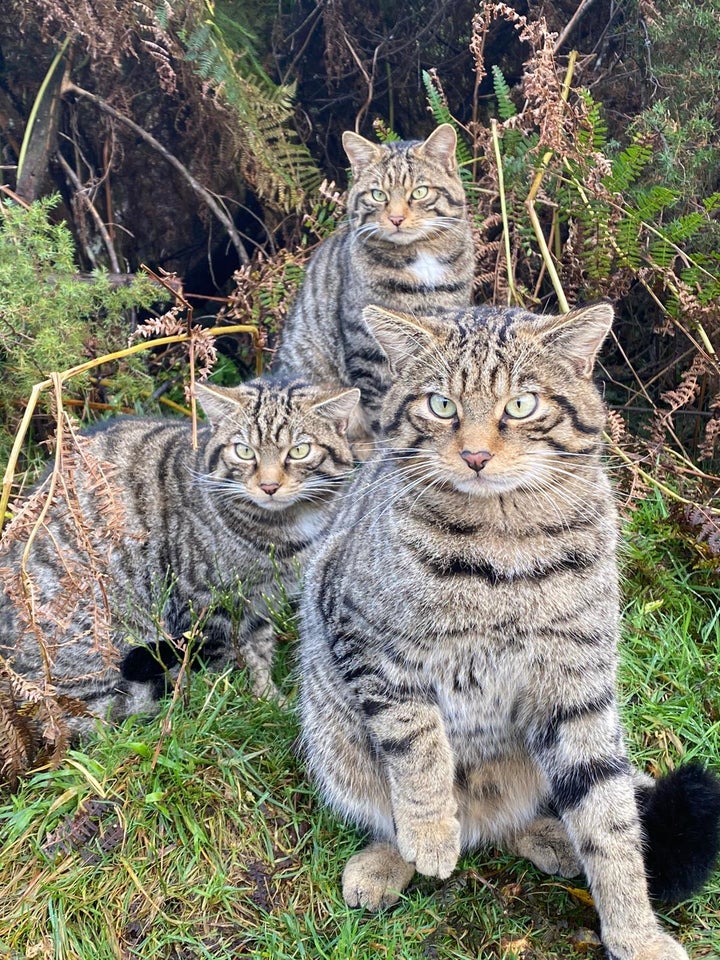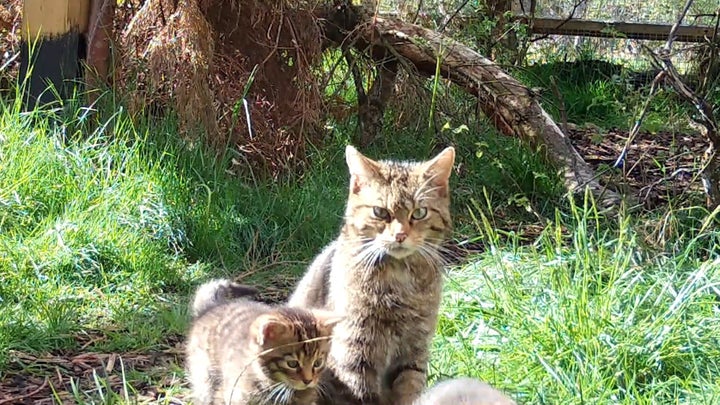Captive-born Scottish wildcats were released into a national park in Scotland this month as part of a European project aiming to save the elusive species.
“It’s a really exciting milestone,” Helen Senn, the project lead for the Saving Wildcats initiative, told CNN about Thursday’s news. Senn added that the wildcats are “on the brink of extinction.”

The Scottish wildcat, also known as the Highland tiger, is a tabby-striped feline that’s stockier and about a quarter larger than the typical domestic housecat. Native to Great Britain, the cats now only roam wild in northern and eastern Scotland.
The animals almost went totally extinct last century due to hunting and habitat loss. Though their population has started to grow again, they currently face another major threat ― interbreeding with feral domestic cats, resulting in a kind of hybrid feline.

In 2019, the International Union for Conservation of Nature declared that the wild population of Scottish wildcats was “no longer viable,” estimating that the number left could be as low as 30. The Saving Wildcats program, led by the Royal Zoological Society of Scotland, was set up shortly after this assessment with the aim of breeding and releasing more wildcats.
Now, conservationists have begun the process of freeing 22 captive-born wildcats at “undisclosed locations” within the nearly 1,500-square mile Cairngorms National Park in the Scottish Highlands, according to a statement from RZSS. The releases are taking place privately because of the “sensitive nature of the species,” but researchers will be tracking them via GPS collars.

“We hope that this project will pave the way for the full recovery of Scotland’s last remaining native cat species,” Senn said in the statement.
Though the cats’ caretakers have worked to prepare them for life in the wild, Senn noted that “life is tough for wild carnivores and the sad reality is that some of the wildcats that we release will not survive.”
But, she added, “we also know that inaction will result in extinction.”

